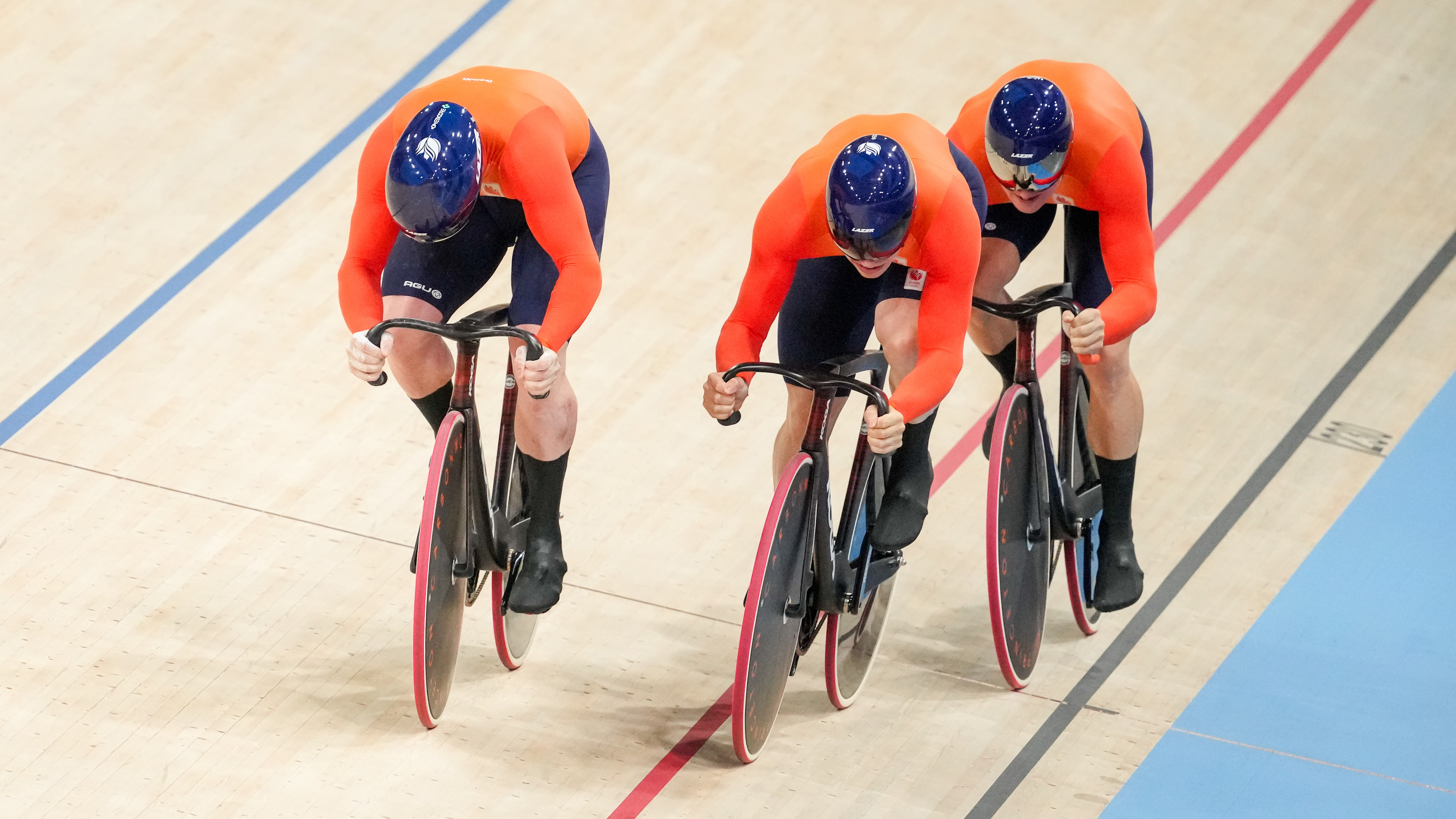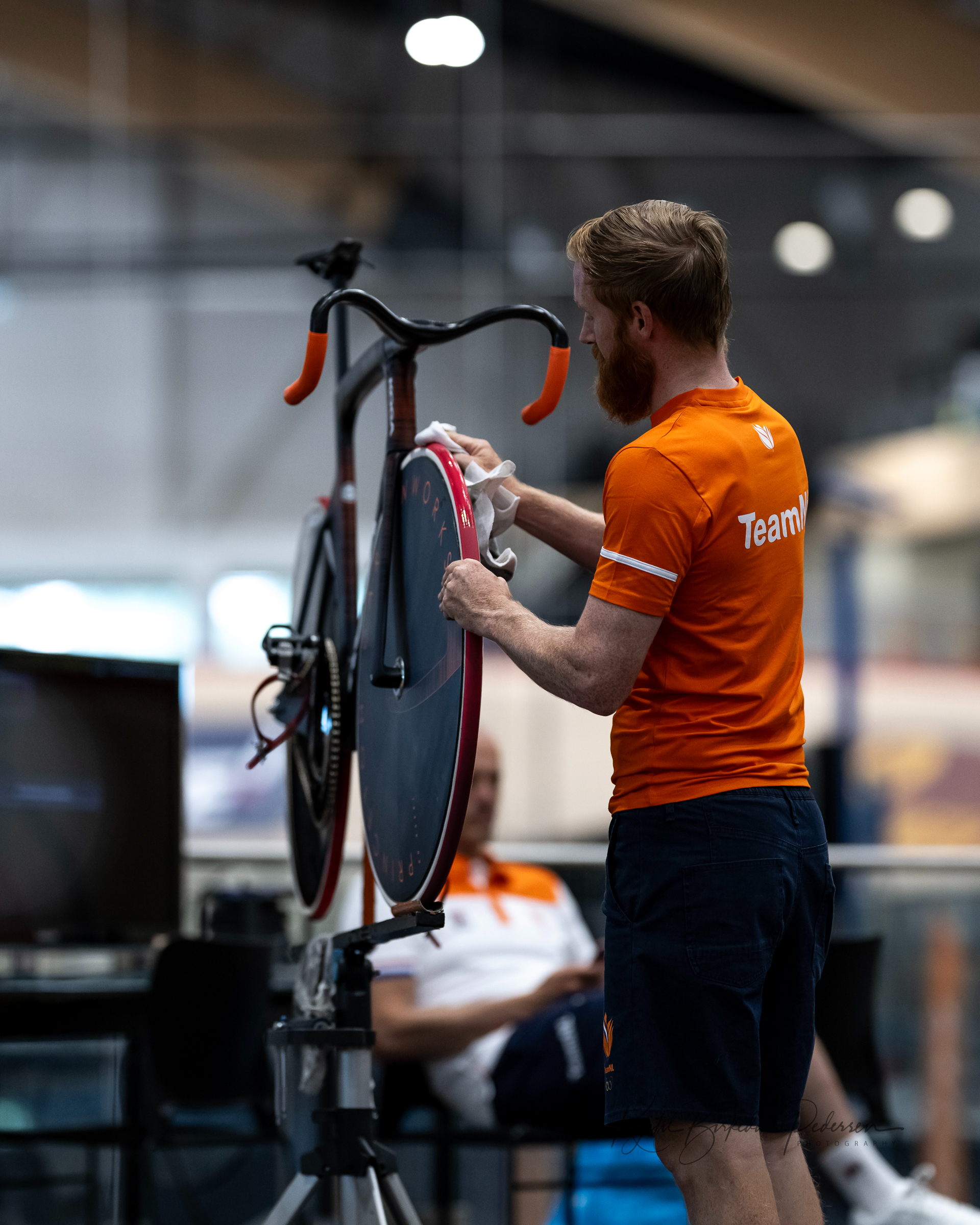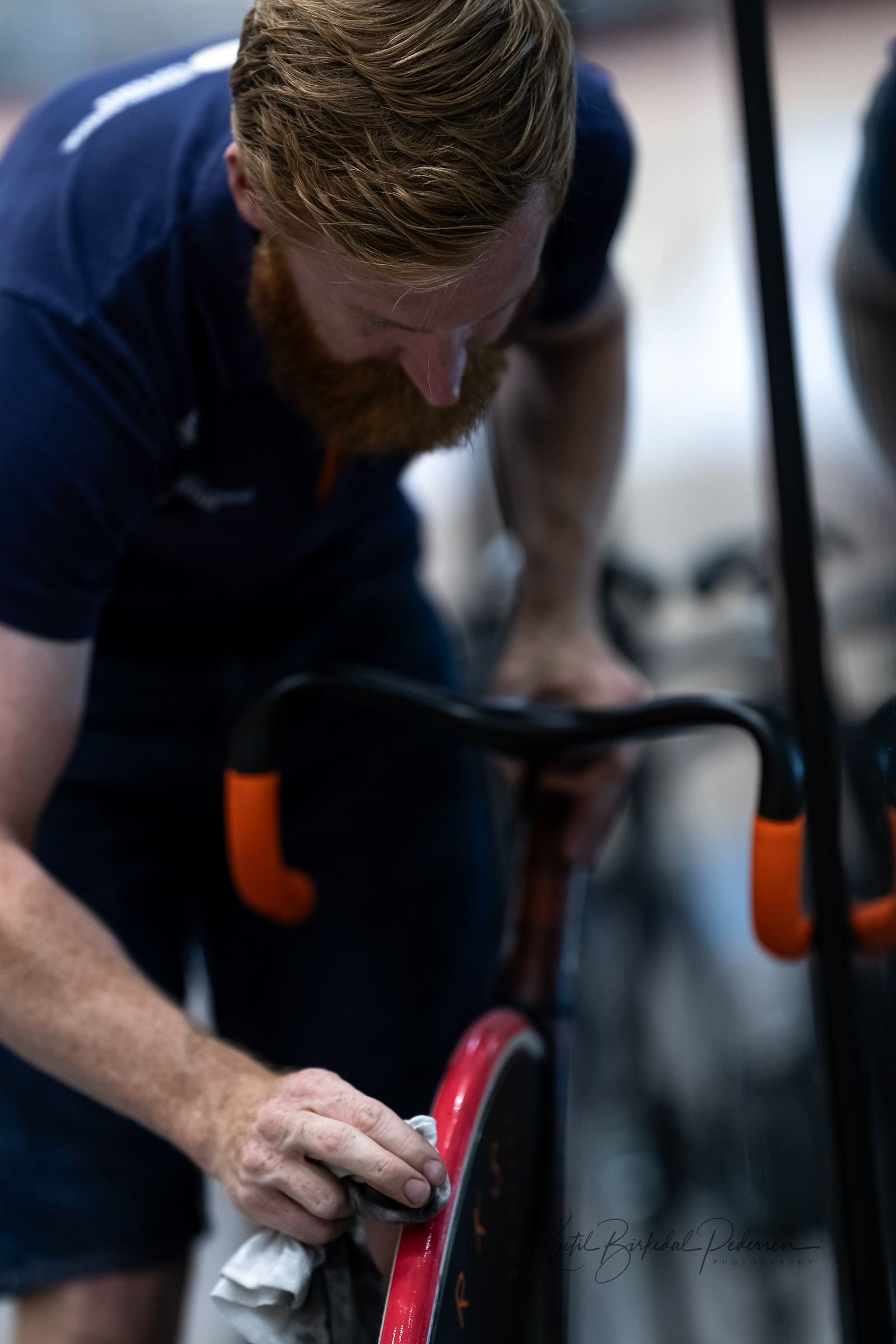
The Netherlands roared to an Olympic men's Team Sprint victory last night and scored a new World and Olympic record of 40.949 seconds for the three-lap sprint event along the way.
The collective firepower of Roy van den Berg, Harrie Lavreysen, and Jeffrey Hoogland who have been dominant in sprint events over the past several years was too much for silver medal winners Ed Lowe, Hamish Turnbull and Jack Carlin of Team GB.
Fractions of seconds determine the difference between winning and losing on the boards of the velodrome. None of the equipment being used by any nation is chosen at random and the constant search for speed is seemingly never-ending.
You may have noticed the eye-catching bright pinky/red Dugast tyres fitted to the black Koga bikes being ridden by the Dutch squad. These are no ordinary tyres, and given the squad's dominance and world-beating performance, we thought we would take a closer look at the special tyres chosen by the Dutch squad. The same tyres are used across the board and were ridden by the women's team sprint squad on their way to fourth place in the competition.
We recently published an in-depth track tech feature with highly experienced Dutch Head mechanic Tim de Boer who shared some info on the team's tyre choices and why they choose to use them.

The Dutch track team chose to use Dugast latex tubulars. If you aren't sure, tubular tyres are comprised of an inner tube (often latex) that's sewn into a casing which is usually cotton. The rubber tyre tread is applied and a base tape then goes over the stitched together casing. A glue is then applied to the tyre's base tape and the wheel's rim to bond them together. Tyres have to be glued properly to ensure the tyres are on straight and that the tyre and wheel don't become unbonded at a crucial moment.
Dugast tubulars have long been considered to be some of the fastest around, but a couple of years ago the small Dutch company was acquired by Vittoria.
It seems Vittoria isn't interested in producing Dugast track tubulars moving forward which means the end of the road for the legendary pink tyres. You can find the cyclocross tubulars on the website, but it's the end of the road for the track tubs. The Dutch squad considered them the fastest tyre option for the track and placed one last order with the company. We can't list an RRP here, because we simply don't know what they cost and tyres aren't commercially available any more.
"Dugast is gone, the team were able to order a lot of tyres because they knew things would be changing, and Dugast gave us everything they were able to make. Everything that isn't perfect we use in training. For the Olympics, we put on the good ones."
Chatting with De Boer, it sounded like the team got as many of the handmade tyres as Dugast were able to produce for them. The tyres use a latex tread, and the team use them in a 25mm size on their Campagnolo rear and Princeton front disc wheels. On the topic of wheels, De Boer also told us the CULT bearings in the Campagnolo Ghibli disc wheels, now the choice for almost every nation after years of Mavic dominance are really excellent.
"We put so much pressure in it, normally we put 14 bars in it, and that's like 200 psi. So they just have to be really hard, from what I've tested, it's like the harder, the better. But we don't want to risk blowing a tyre or something, so we always just stick with 14 bars."

The handmade Dugasts, as mentioned have a latex tread and bare cotton base tape. The handmade nature means sometimes a tread may not be completely straight on a casing, which means the tyre may not run perfectly once mounted. De Boer pre-selects the very best ones for use a the Olympics.
"We know with these tyres, they're so fragile and lightweight and they're not perfect, even if you sort them, they're still not perfect. I can still glue a lot of tyres in Paris if necessary, I don't feel nervous about them not being stuck."
The incredibly lightweight construction also means the tyres can wear out in a matter of laps, that's just a few kilometres, depending on the event and how they are being ridden. Imagine your road tyres wearing out in just over two kilometres.
"After the standing starts with the sprinters, the tyre can have damage and need changing. But in the Omnium the tyre can last a long time, it depends on the event and the rider. With a smooth rider, the tyre will last a long time, with a rider that's all over the place the tyre won't last long. In the Madison, the tyres wear quickly due to the aggressive riding and line changes."
De Boer explained that many nations choose to use other tyres, like Vittoria or Continental but he still considers Dugast the very fastest, although at some point the team's stock will run out.
"There are not many countries riding on Dugast anyway. They think they are not trustworthy and that sometimes you get problems with them. They would rather go with Vittoria which are slower but hold air for a very long time."
"Why is it too much work? If it's a gain, it's a gain. For me, it doesn't matter if I have to change a tyre before the race, if it's quicker, it's quicker. "
This is surely an insight into the no-holds-barred quest for speed and performance that helped the Dutch sprinters thunder to Olympic gold and a new World Record last night.







